‘One viewpoint’ for enjoying the International Festival for Arts and Media Yokohama
Text: Sawa Takashi
The International Festival for Arts and Media Yokohama examines the present state of film and new media. This article offers some background information on recent trends in film and new media expression as well as advice on which works to watch out for.
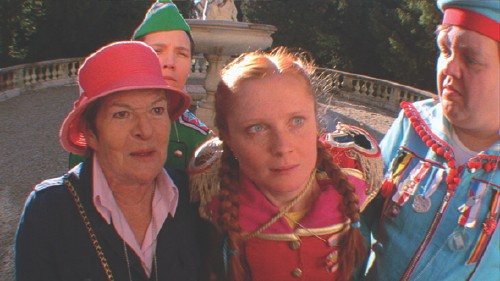 Pipilotti Rist Pepperminta 2009
Pipilotti Rist Pepperminta 2009“Because it involves the artificial reproduction of reality, film could be described as an optical illusion concerning space and motion.”
Film Before Film, Werner Nekes (1)
“By a certain movement of the muscles of her eyes, which she could never describe, she could produce a tiny replica of the wallpaper in the air before her.”
Emily of New Moon, Lucy Maud Montgomery
Film and new media are powerful
The contemporary ‘video installation’, in which video works are projected onto the surface of a white cube or a part of a larger venue, probably first came to the attention of the Japanese public at the 2001 Yokohama Triennale. Seeing people walk right past paintings and sculptures by big-name artists in their rush to set eyes on ‘moving pictures’ of a style different to film was a real eye-opener.
As the years have gone by, displays of video installations have become commonplace at art museums and galleries. We’re reminded that the system for screening films in which everyone sits together in the dark gazing at a single screen is itself a powerful installation device. And also that this is just one of several methods that could have been adopted.
Film and new media are transitory
Even when the latest technology is freely used, ultimately it comes down to the optical illusion of ‘moving pictures’ in which humans are deceived while coming to their senses. From the age of the thaumatrope (2) and phantasmagoria (3) to the latest new media festivals, such ‘magical’ components have always been at the heart of film and video.
Moreover, because film and video are such information-rich media, there is plenty of scope for the association of ideas, which is why works of this genre often lend themselves to connection with other works on film or video. One often finds oneself automatically associating works with other works in the same venue or with previous works by the same artist. This is why films often reference either directly or indirectly other films and why artworks often reference films. Indeed, appreciating this kind of impulsive codifying is one of the joys of attending film and new media festivals. One senses connections among several works that are essentially unconnected. Film and video cannot exist alone.
Powerful yet transitory images. Manmade optical illusions. With these themes in mind, let’s look at the lists of participating artists and works in this year’s International Festival for Arts and Media Yokohama and try to find connections that are relevant to us as of now.
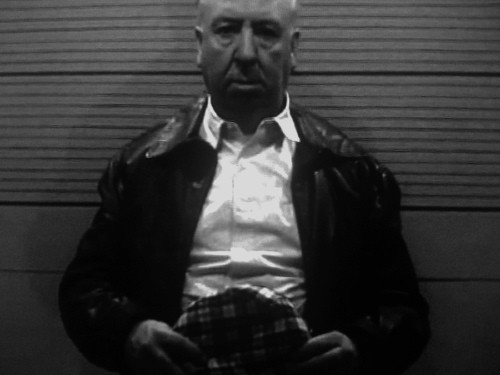 Still from Double Take by Johan Grimonprez, 2009, 80 minutes
Still from Double Take by Johan Grimonprez, 2009, 80 minutesCourtesy Universal and Zapomatik
Accurately speaking, it could be said that film and video actually involve looking at the ‘differences’ between a series of still frames separated by darkness. Johan Grimonprez’s Double Take (2009), which incorporates an element of suspense into the act of looking at differences, depicts by cutting up and splicing together a massive volume of footage a story in which Hitchcock and a double, movie and TV, and Nixon and Khrushchev each plot to kill each other. Differences give rise to fear. This same sense of insecurity can be detected in Matsushima Shunsuke’s simple YouTube-based work VOICE-PORTRAIT – self-introduction, which took the CREAM prize at this year’s competition. The more clips one plays the more real the voices become and the weaker the self-portraits appear.
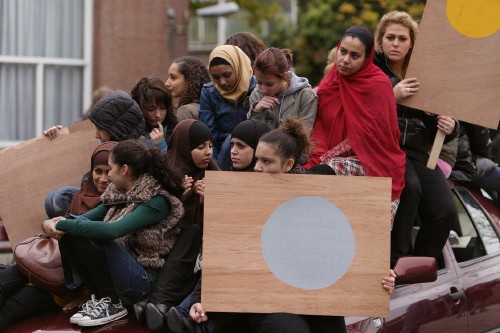 Aernout Mik Schoolyard 2009, Digital video, 2 channel, projection
Aernout Mik Schoolyard 2009, Digital video, 2 channel, projectionCourtesy carlier | gebauer
‘Voices’ can also be added to visuals, distorting the narrative. Perhaps in reaction to the overuse of visual effects that continued until around 2005, in recent years there have been numerous provocative experiments in the use of ‘voices from outside the frame’. Fiona Tan, who has produced a large number of works using existing documentary footage, has this time chosen to weave together a story using old photographs. Yamakawa Fuyuki, famous for his voice performances, echoes the voices of a TV broadcast.
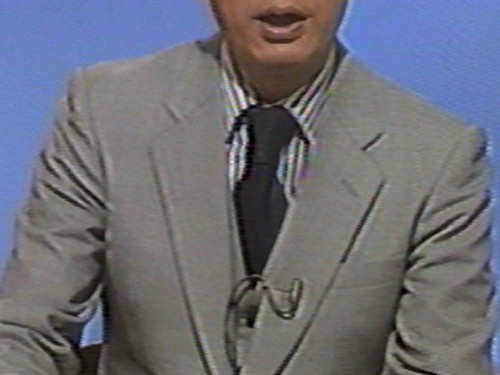 Yamakawa Fuyuki The Voice-over 2008
Yamakawa Fuyuki The Voice-over 2008In many of the films and videos at the festival, the textures of human flesh speak volumes. Hunger (2008), the feature-length debut from contemporary artist Steve McQueen, is a shocking work that depicts in graphic detail the flesh of a hunger-striking IRA activist. HAND SOAP, the latest work from Oyama Kei, who creates CG animations by digitally compositing collages made from his own skin, is the story of a family the members of which resemble sacks of meat and whose skin barely contains their flesh. Aernout Mik, famous for videos like Float and Kitchen in which innocent bodies writhe around with no apparent purpose, is also presenting a new work. In recent times his works have taken on a documentary flavor.
Portrayals of humans in terms of their relationship with communities and states are common at overseas festivals but something rarely attempted by Japanese artists. This discrepancy is something I look forward to considering as I watch works by the likes of Artur Zmijewski, Alfredo Jaar, Lim Minouk, and Walid Raad.
I’m also looking forward to seeing the results of famous artists heading in new directions. Apichatpong Weerasethakul, who attracts attention from both the movie world and the art world, has used animation in a part of his latest work. Pipilotto Rist has directed an 84-minute feature film entitled Pepperminta. How will the sense of exhilaration of her video installations come across in this new format?
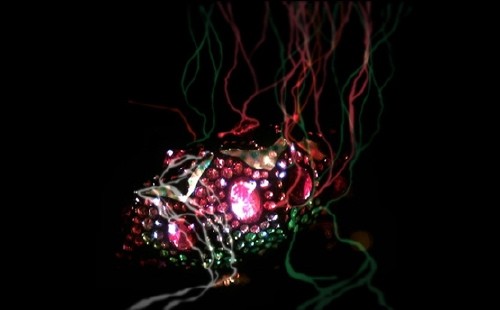 Apichatpong Weerasethakul My mother’s garden, 2007, HD color, silent, 7 minuites
Apichatpong Weerasethakul My mother’s garden, 2007, HD color, silent, 7 minuites Commissioned by DIOR, Courtesy SCAI THE BATHHOUSE
Although the details are still sketchy, such things as the order of the screening schedule and the layout of the works being displayed are a good indication of the festival director’s strategy and zeal, so audiences would do well to pay attention not just to individual works but also to the way they’re put together.
I’m convinced that film and video are a cooperative effect. A powerful yet transitory effect in which movement arises out of difference, and in which the invisible is called to mind through the combination of the visible. After sampling just some of the refreshing new films, videos and other new media on display at this festival, audiences should be able to go home with some fresh insights on the world around us.
-
A documentary produced in 1985 in which Werner Nekes, one of Germany’s leading experimental filmmakers, introduces a range of pre-cinema formats, including the camera obscura and holography.
- A toy consisting of a disk or card with a picture on each side attached to string. When the string is twirled quickly the pictures on each side of the disk appear as a single image due to persistence of vision. Invented in Britain in the 18th century.
- A device invented in France in the late-18th century for projecting images onto walls, smoke, or semi-transparent screens using a slide projector. Public performances saw the phantasmagoria gain popularity throughout Europe especially in the 19th century.
Sawa Takashi
Program director of ImageForum Cinematheque and the ImageForum Festival. Creator of the video Tokuhain and the art book temperature (a collaboration).
